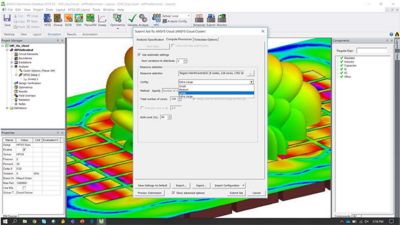-
United States -
United Kingdom -
India -
France -
Deutschland -
Italia -
日本 -
대한민국 -
中国 -
台灣
-
-
產品系列
查看所有產品Ansys致力於為當今的學生打下成功的基礎,通過向學生提供免費的模擬工程軟體。
-
ANSYS BLOG
November 27, 2019
How Cloud-Based & HPC Cluster Simulations Improve Product Design
Product development engineers are faced with a daunting challenge: produce better designs faster than previous market successes.
To meet consumer product delivery expectations, engineers need to run complex simulations to fully understand how design changes affect all aspects of a product.
Engineers use complex simulations, processed on HPC clusters, to ensure automotive designs meet customer expectations.
These simulations are so large that high-performance computing (HPC) is required to process them in a reasonable amount of time. Leveraging cloud- or HPC-cluster-based solutions is gaining widespread acceptance as the best way to get optimal designs to market on schedule.
The automotive industry is a great example of this trend. Every year engineers have to produce cars that are faster, smarter, quieter, greener and stronger than previous models. As many of these are competing objectives, they require the use of large simulations to find an optimum that meets market demands. As a result, HPC clusters and cloud-based computing have become a staple in the industry.
Cloud and HPC Clusters Make Development Fast and Agile
Engineers need a lot of computing power to execute faster and agile product development processes.
For instance, HPC clusters and cloud computing can help engineers solve multiple simulations simultaneously. This enables them to test and compare a range of operating conditions, configurations and criteria. The derived information helps them to quickly determine a product’s optimal setup.
Engineers can gain agility and speed up development using HPC clusters and cloud computing.
As the cloud offers variable storage and computational resources, it enables users to quickly scale up or down simulation throughput and operational budgets. Instead of spending money on software licenses and HPC hardware, engineers can access the tools they need, as they need them, on a pay-per-use basis.
With the rise of data-heavy digital technologies —internet of things (IoT), digital twins and autonomous driving — and variable, unpredictable data loads, access to flexible computational resources is a necessity.
This unpredictability means that engineers may not have access to the software they will need. Fortunately, by consolidating computational resources and moving to the cloud, they can also consolidate their IT footprint. Instead of installing programs on individual computers, they can use software already installed on a central system. This affords them software access from anywhere around the world.
Implementation Challenges to Cloud-Based Simulation Solutions
Despite the benefits, implementing the cloud can be a challenge. Implementations traditionally involve designing job scheduling, user interface and storage systems. If engineers were to implement the cloud themselves, they could experience considerable downtime, productivity loss and expenses.
ANSYS Cloud instantly offers engineers access to computational resources.
Engineers need a turnkey HPC cluster solution that is ready when they need it. The solution will have to enable the shifting of simulation jobs off local machines — to a central computational resource either on premises or in the cloud. It will also need to reduce the time and cost of implementation. Three solution examples include:
- Ansys Cloud: Offers easy access to on-demand HPC in the Microsoft Azure cloud computing platform, from within Ansys Mechanical, Ansys Fluent and Ansys Electronics Desktop
- HPC Cluster Appliance Solutions: Provide an out-of-the-box, plug-and-simulate HPC cluster that is internally or externally managed. The cluster is also preconfigured and optimized for Ansys simulation and job management software
- Cloud-Hosting Partners: Offer outsourced IT and computational resources
For more information, watch the webinar: Cummins’ View on Speed and Agility Enabled by High Performance Computing. Or download the white paper: Cloud Computing Best Practices for Engineering Simulation.













